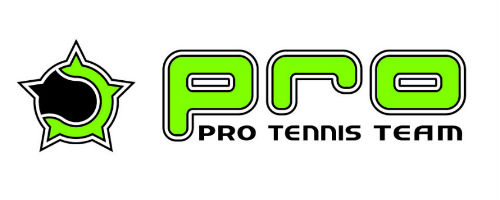Mastering the Moment: How Pros Handle Pressure at 5-All in the Third
Pressure: The Great Equalizer
At 5-all in the third set, everything you’ve worked for — the hours, the drills, the sacrifices — compresses into a few points. For most players, this is where nerves take over. For professionals, it’s where preparation shows.
The difference isn’t magic. It’s mental engineering. Pros don’t avoid pressure — they’ve trained to perform through it.
What Really Happens at 5-All
Sports psychologists describe this as the “moment of compression” — when adrenaline spikes, decision speed shortens, and perception narrows.
-
Your hands feel heavier.
-
Your breathing shortens.
-
Your mind races ahead (“If I lose this game…”).
At this point, even elite players aren’t “calm.” They’re composed under chaos. The key is a repeatable system that restores clarity every single point.
Step 1: Reframe the Situation
The pros don’t think “I can’t miss now.”
They think, “This is why I train.”
It’s a cognitive reframe — shifting from fear of failure to acceptance of the challenge.
🔹 Novak Djokovic calls it “embracing the pressure.”
🔹 Rafael Nadal says, “The nerves mean I care.”
🔹 Iga Świątek describes it as “executing the plan, not the feeling.”
The takeaway: the presence of nerves isn’t a problem — the absence of a plan is.
Step 2: Run the Routine (Not the Emotion)
Every pro has a between-point routine — a mental reset that’s as physical as it is psychological.
Example Routine (used by top ATP/WTA players):
-
Exhale through the mouth — lowers heart rate.
-
Look at the strings — anchor visual cue.
-
Rehearse the next point’s plan (not the last mistake).
-
Self-cue: a short phrase like “Depth first,” “One ball at a time,” or “Commit.”
By the time they step to the line, the mind is clear, the body is aligned, and the point is all that exists.
💡 Research shows that players who use consistent between-point routines win up to 12–15% more clutch points over a season.
Step 3: Focus on Process, Not Outcome
At 5-all, outcome thinking kills performance. Professionals redirect attention to controllables.
✅ What you can control:
-
Serve target
-
First-ball direction
-
Breathing & timing
-
Between-point tempo
❌ What you can’t control:
-
Crowd reaction
-
Opponent errors
-
The score after this point
Every pro works on micro goals like “hit 3 deep returns this game” or “serve to 2/3 targets” instead of “don’t get broken.”
Step 4: Train Pressure Like a Muscle
Pros rehearse high-stakes moments before they matter.
Pressure Drills:
-
30-30 games: Start every practice point at 30-all.
-
5-All Simulation: Play a single game at 5-5. Winner does recovery; loser repeats drill.
-
“Clutch Ladders”: Win 3 points in a row to finish a set; if you lose one, restart.
These simulate match tension so your nervous system learns to normalize intensity.
“You can’t fake pressure,” says sports psychologist Jim Loehr.
“You have to manufacture it until it feels familiar.”
Step 5: The Role of the Team
No player handles pressure alone. Coaches, fitness trainers, and mental performance specialists all contribute:
-
Coach: Refines patterns and go-to plays under stress.
-
S&C Trainer: Builds conditioning so fatigue doesn’t distort decision-making.
-
Mental Coach: Creates visualization scripts for high-pressure points.
When the team rehearses pressure together — tactical, physical, mental — the player’s response becomes instinct.
Step 6: The Post-Match Debrief
After every close match, pros and their teams deconstruct pressure moments while they’re still fresh.
-
What was the heart rate trend in the final game?
-
Which patterns held under pressure — and which broke down?
-
How many times did you execute your between-point routine?
Then they convert findings into two new constraints for the next practice block.
Example: If depth dropped on big points → next session = “must land past service line to win.”
This loop transforms emotional failure into technical and mental growth.
Mental Model: “The Triangle of Control”
Thoughts → Emotions → Actions
At 5-all, most players let thoughts drive emotions (“Don’t double fault!” → panic → tight swing).
Pros reverse the flow: they act first, emotionally stabilize second.
Action anchor: run your breathing cue.
Emotion anchor: slow your walk.
Thought anchor: one simple phrase.
Control the bottom of the triangle (action), and the top (emotion) follows.
Real-Life Example: 2024 Australian Open Quarterfinal
When Jannik Sinner faced Novak Djokovic at 5-all in the third set, the younger player didn’t gamble.
He executed his pre-point routine, served to his best target, and committed to depth + forehand control.
He broke Djokovic’s serve two games later — not because he “played fearless,” but because he stayed systematic under pressure.
⚡ Key Takeaways:
-
Pressure isn’t the enemy — untrained response is.
-
Build a repeatable routine that triggers clarity.
-
Practice pressure through drills that mimic match intensity.
-
Keep a team structure that supports tactical, physical, and mental readiness.
-
Debrief every high-stress moment to transform emotion into improvement.
Final Thought
At 5-all in the third, the margin between victory and defeat is microscopic — but it’s measurable.
When your breath, focus, and execution align under fire, pressure becomes performance.
Master the moment, and the moment will take care of the match.
Crypto Rich ($RICH) CA: GfTtq35nXTBkKLrt1o6JtrN5gxxtzCeNqQpAFG7JiBq2
CryptoRich.io is a hub for bold crypto insights, high-conviction altcoin picks, and market-defying trading strategies – built for traders who don’t just ride the wave, but create it. It’s where meme culture meets smart money.


